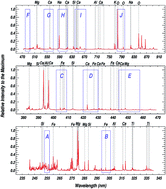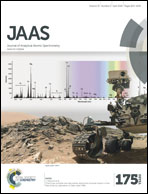ChemCam activities and discoveries during the nominal mission of the Mars Science Laboratory in Gale crater, Mars
Abstract
At Gale crater, Mars, ChemCam acquired its first laser-induced breakdown spectroscopy (LIBS) target on Sol 13 of the landed portion of the mission (a Sol is a Mars day). Up to Sol 800, more than 188 000 LIBS spectra were acquired on more than 5800 points distributed over about 650 individual targets. We present a comprehensive review of ChemCam scientific accomplishments during that period, together with a focus on the lessons learned from the first use of LIBS in space. For data processing, we describe new tools that had to be developed to account for the uniqueness of Mars data. With regard to chemistry, we present a summary of the composition range measured on Mars for major-element oxides (SiO2, TiO2, Al2O3, FeOT, MgO, CaO, Na2O, K2O) based on various multivariate models, with associated precisions. ChemCam also observed H, and the non-metallic elements C, O, P, and S, which are usually difficult to quantify with LIBS. F and Cl are observed through their molecular lines. We discuss the most relevant LIBS lines for detection of minor and trace elements (Li, Rb, Sr, Ba, Cr, Mn, Ni, and Zn). These results were obtained thanks to comprehensive ground reference datasets, which are set to mimic the expected mineralogy and chemistry on Mars. With regard to the first use of LIBS in space, we analyze and quantify, often for the first time, each of the advantages of using stand-off LIBS in space: no sample preparation, analysis within its petrological context, dust removal, sub-millimeter scale investigation, multi-point analysis, the ability to carry out statistical surveys and whole-rock analyses, and rapid data acquisition. We conclude with a discussion of ChemCam performance to survey the geochemistry of Mars, and its valuable support of decisions about selecting where and whether to make observations with more time and resource-intensive tools in the rover's instrument suite. In the end, we present a bird's-eye view of the many scientific results: discovery of felsic Noachian crust, first observation of hydrated soil, discovery of manganese-rich coatings and fracture fills indicating strong oxidation potential in Mars' early atmosphere, characterization of soils by grain size, and wide scale mapping of sedimentary strata, conglomerates, and diagenetic materials.

- This article is part of the themed collection: JAAS 30th anniversary

 Please wait while we load your content...
Please wait while we load your content...